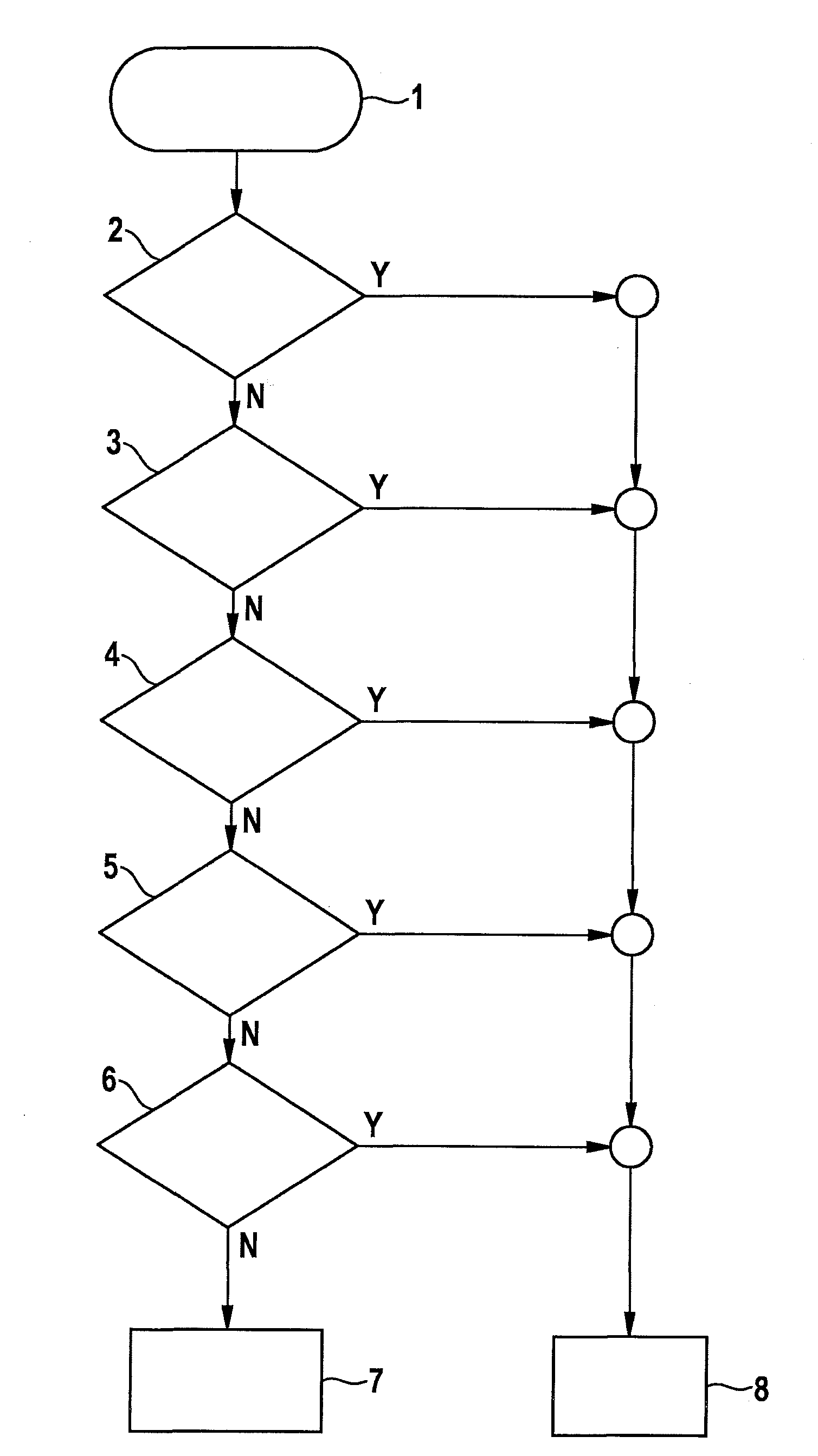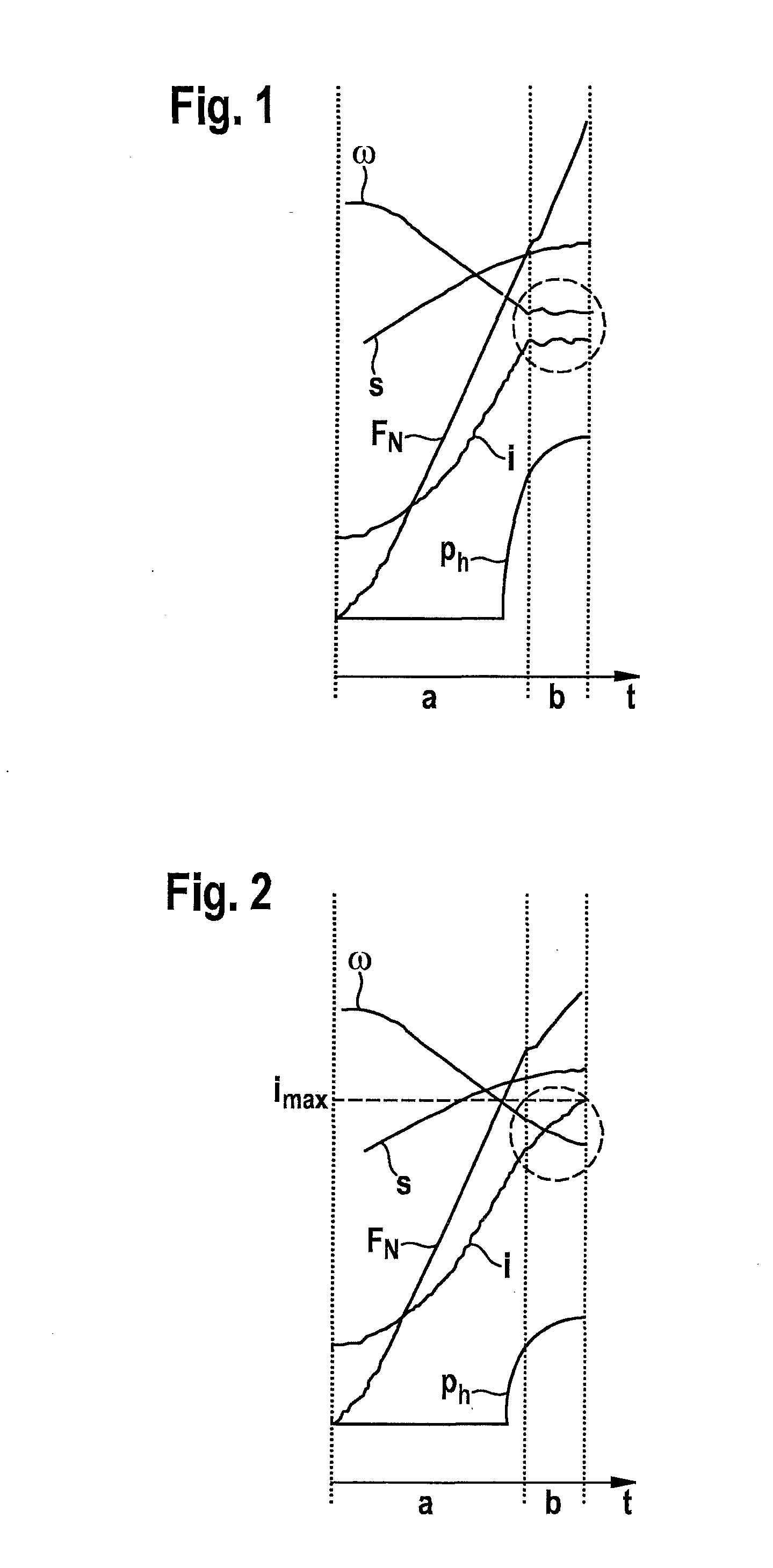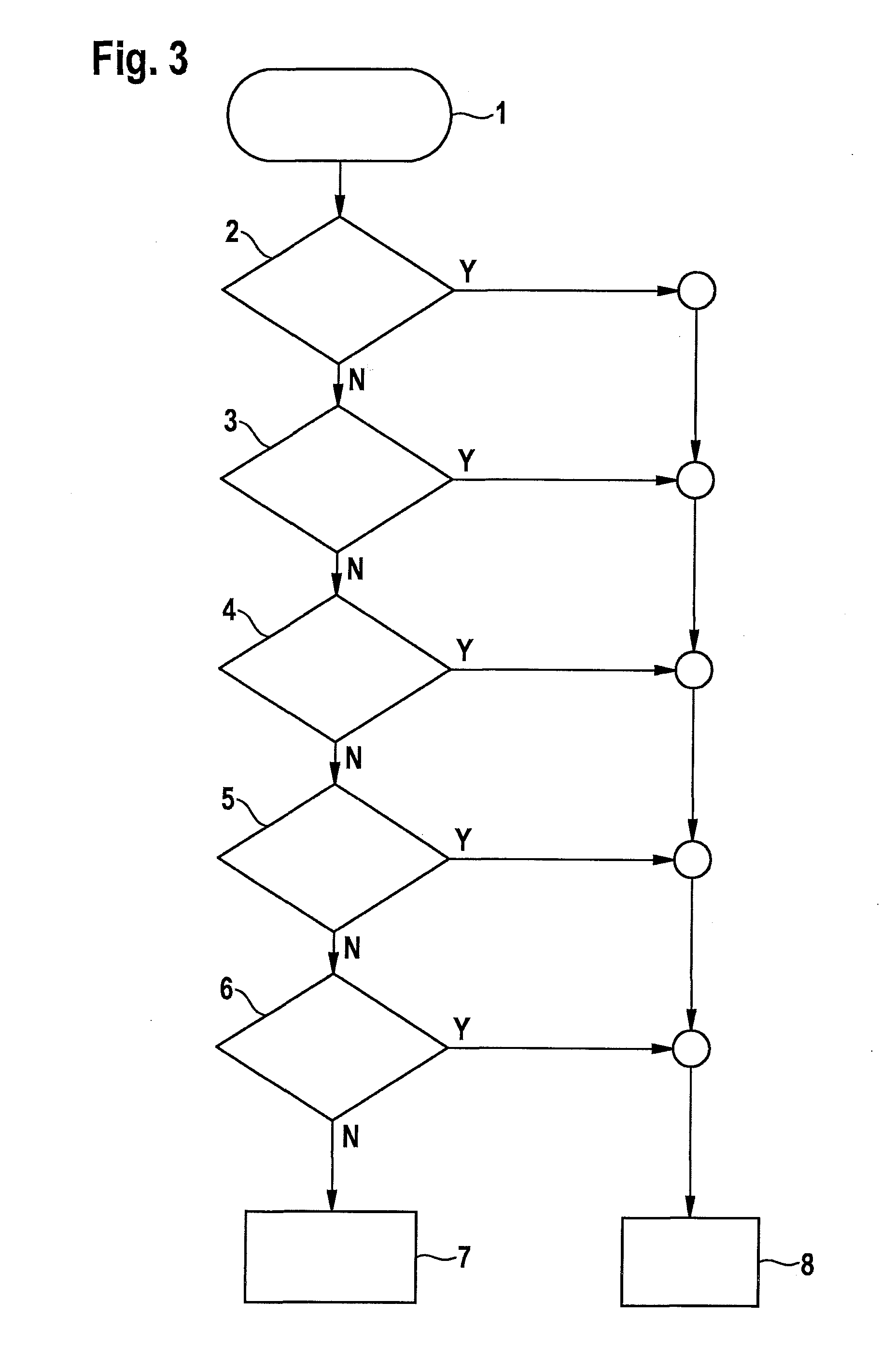Method for determining a failure in a service or parking brake in a vehicle, regulating or control unit for carrying out the method, and parking brake having such a regulating or control unit
a technology for parking brakes and services, applied in braking systems, analogue processes for specific applications, instruments, etc., can solve problems such as the assumption of errors in hydraulic brake devices, and achieve the effect of reliably detecting failures
- Summary
- Abstract
- Description
- Claims
- Application Information
AI Technical Summary
Benefits of technology
Problems solved by technology
Method used
Image
Examples
Embodiment Construction
[0023]In FIGS. 1 and 2, the characteristic curve of various characteristics of a parking brake in a vehicle is illustrated chronologically. Hydraulic pressure ph of a hydraulic brake device, current i of an electric brake motor, motor speed ω of the brake motor, actuator travel s of the brake motor, as well as total clamping force FN, which is composed of a portion of the electric brake motor and a portion of the hydraulic brake device, are plotted. FIGS. 1 and 2 each show two chronologically consecutive phases a and b; phase a indicates the solely electromechanical force buildup and phase b indicates the electrohydraulic force buildup until target clamping force FN is reached.
[0024]In the regular case according to FIG. 1, current characteristic curve i as well as motor speed ω of the electric brake motor are on an approximately constant level within a relatively narrow admissible value range during phase b as soon as the target clamping force is reached. In the case of a failure of...
PUM
 Login to View More
Login to View More Abstract
Description
Claims
Application Information
 Login to View More
Login to View More - R&D
- Intellectual Property
- Life Sciences
- Materials
- Tech Scout
- Unparalleled Data Quality
- Higher Quality Content
- 60% Fewer Hallucinations
Browse by: Latest US Patents, China's latest patents, Technical Efficacy Thesaurus, Application Domain, Technology Topic, Popular Technical Reports.
© 2025 PatSnap. All rights reserved.Legal|Privacy policy|Modern Slavery Act Transparency Statement|Sitemap|About US| Contact US: help@patsnap.com



